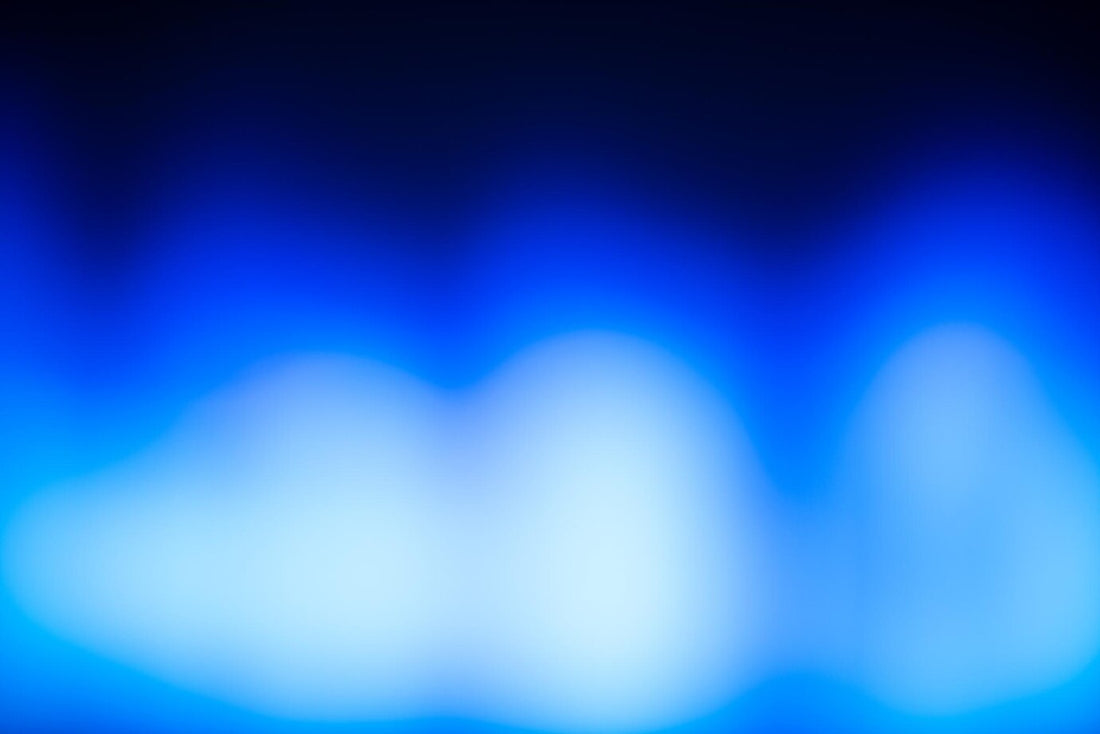
Understanding Blue Light and its Effects On the Human Body
Chris DiproseShare
Our LED neon signs are made from LED and LED emits a blue light as part of its visual spectrum. Blue light impacts our sleep, and mood, so its important to fully understand how blue light can impact us, and be mitigated when we use LED signs at times of day when our body is not usually expected to be exposed to it.
Introduction
In the modern era, our eyes are constantly exposed to various forms of light, both natural and artificial. One specific type, blue light, has been the focus of numerous discussions and research in recent years. This guide will delve into the science behind blue light, how it affects us, and how we can manage our exposure for optimal health and wellness.
What is Blue Light?
Blue light is a component of the visible light spectrum that can be seen by the human eye. It has a short wavelength, which means it produces a higher amount of energy. Studies suggest that, over time, exposure to the blue end of the light spectrum could cause serious long-term damage to your eyes.
Sources of Blue Light
Sunlight
The primary source of blue light is sunlight, which contains red, orange, yellow, green, blue, indigo, and violet light. When combined, it becomes the white light we see. Each of these colors has a different energy and wavelength. Rays on the red end have longer wavelengths and less energy. On the other hand, rays on the blue end have shorter wavelengths and more energy.
Artificial Sources
In addition to the sun, we are also exposed to blue light from a range of artificial sources. These include fluorescent and LED lighting, flat-screen LED televisions, computer monitors, smartphones, and tablet screens.
Impact of Blue Light on Sleep
One of the most significant impacts of blue light is its effect on the body's natural sleep-wake cycle, or circadian rhythm.
The Sleep-Wake Cycle
Our circadian rhythm is a 24-hour internal clock that cycles between sleepiness and alertness at regular intervals. It's also known as your sleep/wake cycle.
Blue Light and Melatonin
Melatonin, a hormone produced in the brain by the pineal gland, is a key player in the sleep-wake cycle. The production of melatonin is influenced by the light-sensitive cells in the retina, our eyes' inner lining.
During the day, light exposure causes the brain to communicate to the pineal gland to suppress melatonin production, making us feel more alert and awake. As the day fades into night, the lack of light signals the gland to produce melatonin, which makes us feel sleepy.
How Blue Light Affects the Cycle
Blue light, especially from screens, can delay the release of melatonin, increase alertness, and reset the body's internal clock (or circadian rhythm) to a later schedule. This is particularly concerning in the evening, as it can lead to difficulty falling asleep and staying asleep.
Blue Light and Performance
Interestingly, blue light isn't all bad. In fact, it can boost alertness, help memory and cognitive function, and elevate mood.
Blue Light and Alertness
During the day, exposure to high amounts of blue light can actually increase alertness and performance. This could be beneficial for individuals who are engaged in activities that require a high level of focus or concentration.
Blue Light and Cognitive Function
Some studies have found that exposure to blue light can improve cognitive functions, such as memory and reaction time.
Blue Light and Wellbeing
While the effects of blue light on sleep and performance are quite clear, its impact on overall wellbeing is a bit more complex.
Mood and Blue Light
Exposure to adequate natural light during the day can also help maintain a healthy mood. This is why people may feel down during winter when daylight hours are short — a condition known as Seasonal Affective Disorder (SAD).
Blue Light and Eye Health
Given our modern environments, our eyes are subjected to a significant amount of blue light exposure, particularly those who spend long hours in front of screens. While the evidence of blue light causing eye damage is inconclusive, it's known that blue light can cause digital eye strain or computer vision syndrome.
Managing Blue Light Exposure
While it's nearly impossible to avoid blue light completely, there are several strategies that can help you manage your exposure and prevent its potential negative effects.
Limit Screen Time
One of the simplest ways to reduce blue light exposure is to limit the amount of time spent in front of screens. This is particularly important during the evening hours when blue light can have the most significant impact on your sleep cycle.
Blue Light Blocking Glasses
Blue light glasses have specially crafted lenses that are said to block or filter out the blue light given off from digital screens. The lenses claim to protect your eyes from glare and can help reduce potential damage to your retina from prolonged exposure to blue light.
Use Blue Light Filters
Many modern digital devices come with built-in blue light filters, or "night mode," which can be activated to limit the amount of blue light emitted.
Maintain Proper Eye Care
Regular eye exams and proper eye care can also help protect against harmful blue light exposure. Optometrists can provide personalized advice based on your individual needs.






